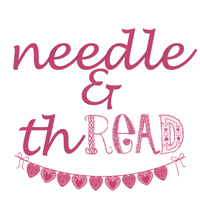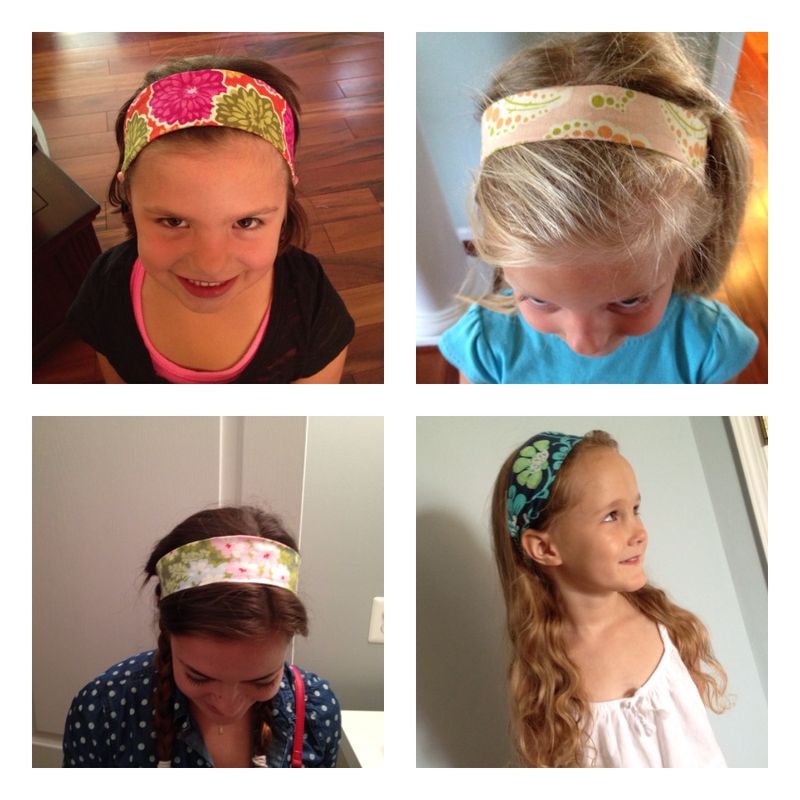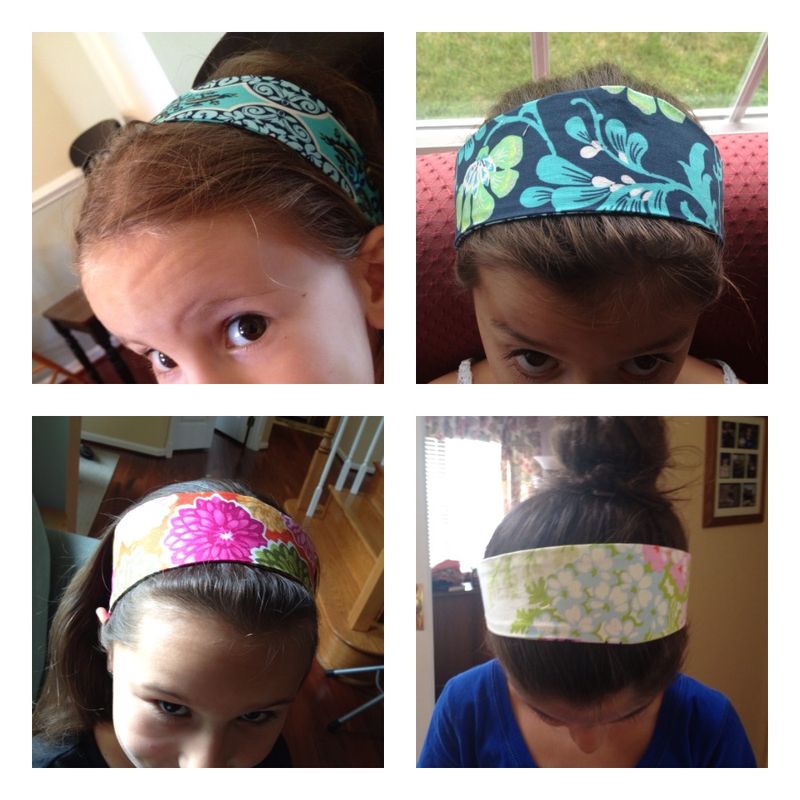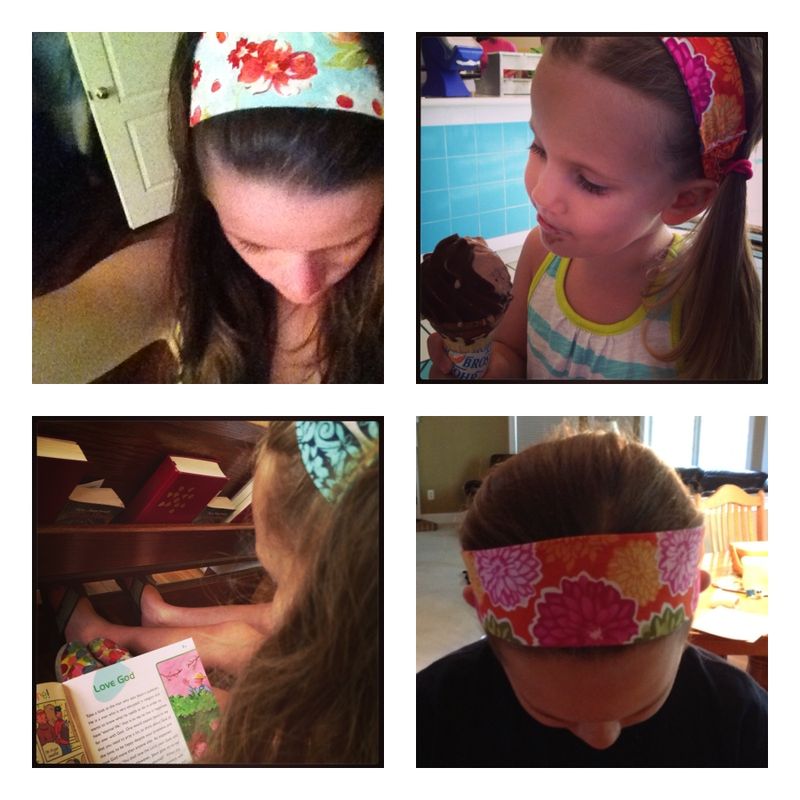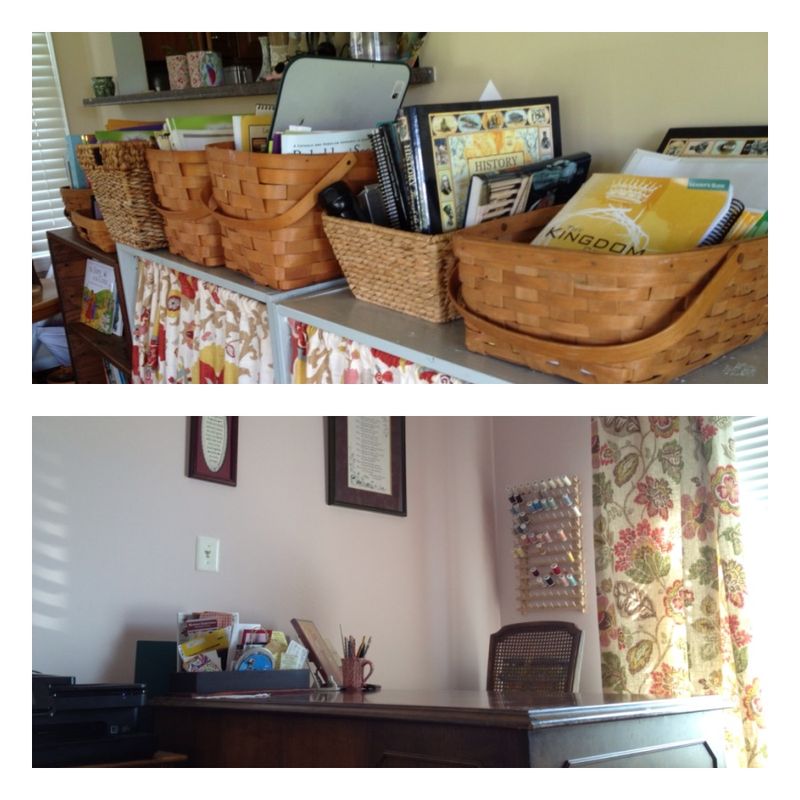Good morning! Today, I'd like to introduce you to Chris Valpiani, the mother of five girls (including toddler twins), who has been inspiring (and amusing) me on Instagram and Facebook for years. Chris has beautifully incorporated technology into her very organic "unschooling" family lifestyle. I asked her drop in and offer some not-back-to-school app recommendations. This is a wonderful list that has greatly influenced the new iPad in the Foss household. Please meet Chris:
My first iPad came about when I was pregnant with my
twins. My thoughtful family
predictably saw that there would be a lot of sit-around-and-nurse-babies time in my immediate and long-term
future, and so gifted me one for Christmas. It revolutionized my life! … In the very best of ways. And it didn’t take me anytime at all to realize its
potential with my children as well.
It has become a wonderful tool in my arsenal all-things-homeschool to
throw at my kids and let them learn all they can soak up, and have a fabulous
time in doing so.
The look of “school” has changed for us. The iPad is here, and will only likely
become more innovative and offer more opportunities to take advantage of; and
as a homeschooler, if my children are learning AND enjoying themselves, then
I’m pleased as punch!
I wanted to share a few apps that have really made a
difference in our homeschool. But
before I begin, I want to mention that there are a lot of gaming apps that
offer learning opportunities, as well the apps that are advertised with an
obvious education approach. The
ones that I care to share here are more in the category of “obviously
educational”; we each have our unique perspectives on what we consider
educational for our children, so I’ll not try to convince anyone of the
educational value in Where’s My Water, a
wildly popular app here in this household ;)
This isn’t a comprehensive list by any means, and it isn’t
even all that I have on the iPads that we use, but these are the ones that I
offer to share with others, if someone just so happens to ask. I’ve got plenty of apps that I would
*love* for my children to use and fall in love with, but for reasons known only
to them, they just aren’t necessarily drawn to these apps, though I’ll not
delete them just yet – as with food, tastes can change as children grow.
Apps for Alphabet
& Phonics (Early Reader ideal):
First Word Animals
(from Learning Touch):

{pictured is the free First Words sampler}
Ages:
Preschool, Kindergarten, First Grade (Early Reader stage).
This app presents phonics is a fun way. A picture of an animal appears with the
name below it (example: cat, dog, pig, hen, etc.). And at the bottom are all the letters within the name of the
animal. Your child can touch any
letter to hear its sound, then touch and drag the letter to the proper
placement within the animal name.
Once all the letters have been placed, then you hear the sound of the
animal name aloud. This is the
equivalent of Usborne First Word Flashcards, yet a bit more engaging.
I want to
mention too that through this app you can also be introduced to same-idea apps
for Richard Scarry and the Bob Books.
I don’t have these apps (yet), but they look good.

Elmo ABC’s (by Sesame
Street):
Ages:
Preschool, Kindergarten.
Since the app is called “Elmo ABC’s”, I’m sure it’s no
surprise that this app focuses on ABC introductions through cute games and
songs. If your child enjoys Elmo,
this app is for you.
Montessori Moveable
Alphabet (also called Montessori Approach to Language, by Rantek):
Ages: However
old your child is, as long as they enjoy using a moveable alphabet.
A Montessori moveable alphabet isn’t cheap, so if you’re
looking for an alternative, this app is the right one. We have an actual Montessori moveable
alphabet and use it regularly, but my children still enjoy doing it on the iPad
as well. You’ll not find “flashy
and loud” with this app. Mellow
and calm and delightful.
Starfall ABC’s and
Starfall Learn to Read (by Starfall Education):
Ages: 3 years
old and up (…ish).
Just like the website that I’m sure you are all familiar
with, they have a wonderful app! A
favorite, for sure. Yeah,
Starfall!
Apps for Math and Numbers:

Zoom (by Motion Math):
Ages: Preschool
through 3rd or 4th grade (with the decimals being the
most advanced number challenge).
This is a numbers game that focuses on number
placement. You can work with whole
numbers, negative numbers, and decimals (depending on the knowledge your child
has). An example would be – the
“player” would have to correctly answer where the number “5” is located, with a
scale show on the screen, the “player” would then place the number 5 between
the numbers 4 and 6. It is played
the same way with negative numbers, and decimals. The program offers lots of help if it senses that there is
hesitation on the player’s part.
Math Bingo (by ABCya):
Ages: At
whatever age your child begins to add numbers.
Just as the app name suggests, a Bingo game! Kids love Bingo! This app offers games in Addition,
Subtraction, Multiplication, and Division. If you answer the number problem correctly, then you earn a
space; the player can play for just Bingo, or a full Black-Out (and there is a
potential for earning points for extra Bingo activities) … this is truly a
no-guilt, go-ahead-and-give-them-the-iPad-game. Let your kids go, have fun, and help them to master these
basic math skills!
Fractions (by
Brainingcamp):
*A note. Brainingcamp also makes several other
math-related apps. Algebra Tiles,
Area of Rectangles, Area of Parallelograms, Area of Triangles, Color Tiles,
Histograms, Number Rods, Numbler (a Math Game), Order of Operations, Pattern
Blocks, Simplifying Expressions, and Solving Equations.
Ages: Your best
judgment, based on your child’s current ability.
I have the Fractions app by Brainingcamp. My 8 year old has been playing around
with this app for about a year now and has enjoyed it very much. It provides an introduction to Fractions,
equivalent fractions, common denominators, comparing and ordering fractions,
adding and subtracting fractions, multiplying fractions, and dividing
fractions. Within each subject a
lesson is provided, and opportunity to solve problems is presented, and further
challenges provided if they like.
This app is very nicely put together.
Multiplication Genius
(by Blue Onion Soft):

Ages: Your best
judgment, based on your child’s current ability.
There’s really nothing flashy or fancy about this app; it’s
a simple and fun way to practice multiplication without having to use a
workbook or a worksheet – just another option or venue for practice.
Kindergarten Addition
(by I Did It Learning):
Ages: 4 years old and up
This is a cute little app that helps my younger ones
practice their adding skills in a very non-threatening way. It’s not a timed-drill, there’s no
pressure, and you have the option of listening to a nice-sounding British
woman talk you through the problem of (for example) 2 + 3. (British woman’s
voice = bonus)
Khan Academy:
Ages: 5 years
old and up (depending entirely upon the subject being learned)
Just as with the Khan Academy website, the app offers an
amazing variety of videos that cover the subjects of: Math, Science &
Economics, Computer Science, Humanities, Test Preparation, Talks and
Interviews, and Project & Discovery Lab (which includes Robots, Reverse
Engineering, Discoveries, Projectile Launcher, Thermodynamics). The videos are categorically organized
and titled such that it takes the guesswork out of knowing which videos to
begin with and progressively advance to.
Apps for Science:
Video Science (from
Science House):
Ages: … hard to
define an age to these videos. My
children will watch just about anything called a “video”, so my 4 year old will
sit through a 10-minute video on Cryogenics then ask to watch it again when
it’s over.
A series of short science videos listed by topic. (There are
about 80 videos). My children sort
of skip this app quite often. Upon
compiling this list, I asked them why they don’t spend much time on it. The short answer was that they just
forgot that it was even there! …
so I think I may have sparked a new interest for them. Wonderful J
Britannica Kids Solar
System / Britannica Kids Volcanoes / Britannica Kids Dinosaurs (by Britannica Encyclopedia):

{pictured is Coral Reefs--a treat for Nicholas}
Ages: 2nd
or 3rd grade and on up (my best guess).
The Britannica Kids series is incredible. Just as you might assume, it is much
like an encyclopedia with fantastic images and is fact-based and packed with information. Within these apps, you can read
articles, search for specific topics, touch-draw on the screen, do jigsaw
puzzles, play a few select games, watch pictures and videos, and take quizzes. The Solar System, Volcanoes, and
Dinosaurs are the version that I have, but Britannica also offers: Ancient Egypt, Rainforests, Ancient
Rome, Aztec Empire, Snakes, Knights and Castles, and Endangered Species. All of these are $4.99
Kids Discover
Galaxies / Kids Discover Cells (by Discover Kids):
*A note. Discover
Kids also makes apps for Life on Mars, Ancient Greece, The Constitution,
Matter, Washington D.C, Extreme Weather, Simple Machines, the Sun, Antarctica,
Ancient Egypt. Some of these apps
are free, and the ones that aren’t, cost $3.99.
Ages: Using my
best guess, I would say if they can read, they’ll enjoy bits and pieces of this
app, and more of it as they grow.
This app has *a lot* of information within it. Some of the items you just read
through, some are videos, some are interactive pictures and puzzles, your child
can take quizzes, and navigate through dozens of subjects within subject by
going to the index, or side bar view.
My children have only just begun to explore this app, and thus far, they
are enjoying it and learning quite a lot.
I should also mention that I only have the free apps. I can’t say what separates the Kids
Discover apps that cost money to those that don’t.
Khan Academy (See
Above)
Bill Nye the Science
Guy (by Disney):

I wanted to mention this app even though we’ve just only
begun to explore it. So far, I’m
impressed. It’s highly interactive
with the kids and spans a great variety of subjects. I think my children are going to have a great time exploring
this app!
Apps for Natural
Science:
Peterson Birds of
North America (by Appweavers):
Ages: I’d say
about 6 and up (depending on if your little one is a budding naturalist).
I really like this app. But it is rather dull.
And it takes up a LOT of memory space. But it is great for detailed information regarding birds, has
an audio option for listening to the bird song, has a built-in record-keeping
capability if your child likes to keep track of the birds he/she spots during
outings or just around the home, and is fact-based and loaded with
information. My only complaint
would be that the bird images are drawings, not actual pictures of the
birds. However, when searching for
a particular bird, it has the categories of birds broken down so detailed that
it’s really a snap for my 8-year old to locate any bird she’s seeking.
Nature Tap (by Green
Mountain Digital):

Ages: If they
are interested in birds, insects, spiders, mammals, reptiles, amphibians, or
wildflowers, they’ll enjoy this app.
Probably the very best thing I love about this app is the
beautiful pictures. That alone is
enough to keep my children engaged.
This is really a fact-based app and isn’t tremendously interactive
(think encyclopedia), yet has its uses.
For example, I’ll use this app in conjunction with our Bird Bingo
game. We can look up each bird on
the app and have a listen to its song as we play the game. But I’ve often found my children
looking through the pictures of all this app has to offer, I particularly enjoy
the wildflowers. My only complaint
about this app is that you cannot search for things by name. You can search birds (for example) by
color, or shape (sub-category such as “Swallow-like Birds”, or “Chicken-like
Marsh Birds”, but there is no place for someone to search, or type in “Common
Kingfisher”, for ease of reference.
Perhaps this feature is forthcoming (I’m sure it would help if users,
such as me, provided feedback to the producers of the app).
Wonders of Geology
(by Mikaya Digital):
Ages: My best
guess would be roughly 3rd grade on up (say 8 or 9 years old and
older).
This is app is simply amazing. Geology 101.
The photography is stunning, breathtaking. This isn’t a game or interactive, it is a narrative (audio
and written). It touches on the
following subjects: Rocks (Sedimentary, Igneous, Metamorphic, Rock Cycle),
Plate Tectonics, Erosion (Wind and Water, Mass Movement, Glaciers, Alluvial
Fans), and Mountains (with the subcategory of Geological Provinces such as the
Appalachian Highlands, Pacific Coast, among others).
Apps for
Geography:

Stack the Countries /
Shake the States (by Third Chicken Inc.):
Ages: A fairly
broad age range, in my opinion. My
6 year old does quite well at answering questions about the states, and my 8
year old excels at the states, but each have a lot of learning opportunity left
with the more challenging Stack the
Countries.
In this app the player is asked a series of questions - such as capitals of countries
(states), official languages of countries, where the country is located (or
what state border which state), landmarks locations, recognizing countries
(states) based on their shape. Each
time you answer the question correctly, you get to drag the country (state)
you’ve earned and try to stack it on top of the country (state) that you’ve
already earned. The point is to stack
the countries (states) on top of one another in order to reach a predetermined
height without making the stack tumble (the player is able to manipulate the
state by turning it to make it more stackable). Points are earned, scores kept, and you advance to the next
level. Super fun! I love this game, and there is a high
education value to it, which makes it a joy for all.
US Capitals – Montessori
Approach to Geography (by Rantek):
Ages: Probably
5 through 9 or 10 years old
This is a nice mellow app. Which is why I love it. And why my kids don’t really play with it. (Hard to compete with some of the other
flashier-catchier apps, but still a worthy app) This is a fact-based app that just gives it straight. No points for right answers, no advancement
to the next level. … very Montessorial. Yes.
Google Earth:
Ages: 5 years and up (younger with a parent
sitting beside)
Have your children look up famous volcanoes, highest peaks,
or Death Valley…. and move on to the Seven Wonders of the World. Then you can give them a list of
addresses to Grandmas and Grandpas, Aunts and Uncles, and let them loose. Great for just playing around with!
Apps for Art:
Art Puzzle (Lite or
Full Version, by MacPhun LLC):
Ages: 3 years
old and up (or thereabouts)


This app is just delightful. I love it. My
children love it. In the Lite
version (that is to say, the FREE version) there are 15 puzzles, in the Full
version there are over 80 puzzles from the most famous artists. Artists include Van Gogh, Botticelli,
Gauguin, Modigliani, and others.
You can make changes to the settings so that you can have a 4 piece
jigsaw puzzle to solve, or have the famous painting be a 100 piece jigsaw
puzzle (depending on skill). You
select the painting that you want to piece together, such as Bal du Moulin del
Galette from Renoir, then you’re set to do the puzzle (all the while listening
to classical music). This is my
dream app. I love it. I can actually see my children’s brains
become enriched while they play with this app. J
Apps that aren’t
subject based:
Tozzle (… I don’t
know who this one is by):
Ages: Preschool,
Kindergarten, First Grade–ish.
This is really like 20 apps in one. There are animal activities, numbers,
letters, shapes, colors, puzzles, silly scenes, music, nursery rhymes, farms,
fruit and veggies. It’s
endless. And the app music is
catchy J
Fish School:
Ages:
Preschool, Kindergarten-ish.
This cute app lets your little one explore their letters,
numbers, shapes, and colors … all set to the tune of classical music. Love this app. When I hear the music and see that my 4
year old has started playing it, I just smile.
Memory Train:
Ages:
Preschool, Kindergarten.
This app is just what the name suggests – helping your child
remember things. As the train goes
by your child needs to remember things such as shapes and colors and them place
them on a “new” train as you saw them on the train that went by.
Brain Pop:
Ages: This really
depends on the subject of the video.
Some of the subjects are more complex (such as Math – dealing with
probability), and some subjects are just fine for the younger crowd (such as
learning music, and famous artists).
In a nutshell, this is an animated video app that offers a
large selection of free videos but also offers a subscription based option that
provides even more videos. There
are hundreds of animated videos for your children to view. The subjects seem almost limitless and
I’m still amazed at how broad the app is.
We began with the free version and then moved onto the subscription
based version and have found it to be totally worth it. The app also offers quizzes as well,
where your child can keep his or her score. The videos also cover subjects such as US History and
Economics. This is a comprehensive
video selection, and each video is more or less an introduction to the subject,
but my children have learned quite a bit on a wide variety of topics.
Reading Rainbow:

Ages: All ages
This app is a subscription-based book and video library, and
is based on the long-running television show that even I watched as a
child. The book library has
several subjects: Action Adventure & Magical Tales, Genius Academy, Awesome
People, National Geographic Kids, Animal Kingdom, My Friends and My Family, and
within each subject there are hundreds of books and several dozen videos to
watch. Reading Rainbow is
constantly adding more books and videos to read and watch. Your child has the option to have the
book read to them by simply pressing the audio symbol, or they can read to the
book to themselves. All my
children enjoy this app, and I feel good about having it available for them.

English Cursive
Letter Practice (from Brainstop):
Ages: Probably
6 or 7 years old and up (really, depending on interest and whether or not this
is a skill you’re working on with your child)
This app is just that, an opportunity to practice cursive
writing. It includes upper and
lower case letters, words, sentences, and numbers. Nothing fancy, just some good ole fashioned handwriting
practice.
Letter School (by
Boreaal):
Ages: 3 years
old and up
Handwriting practice that is actually fun. Nothing short of a miracle here.
I love how the iPad has enhanced the learning culture within
our home. I absolutely embrace
it. As I discover more apps and as
I download more apps, I’ve found that it’s been most beneficial for my children
if I try to keep the app icons organized and grouped together with apps that
are alike or those that are in the same subject category. Another handy feature is how iCloud
stores your apps for you, even if you decide to delete the app from the screen
(if you go to App Store and then “purchased”, you’ll see a running list of all
the apps you’ve downloaded, even if they are free). I’ve found this to be helpful because I can clean up our
touch screens and add and delete apps from the screens depending on how often
my girls use them (… similar to how I like to keep our book basket fresh by
rearranging books every now and again).
I would love to hear what your favorite apps are and why you
like them!

